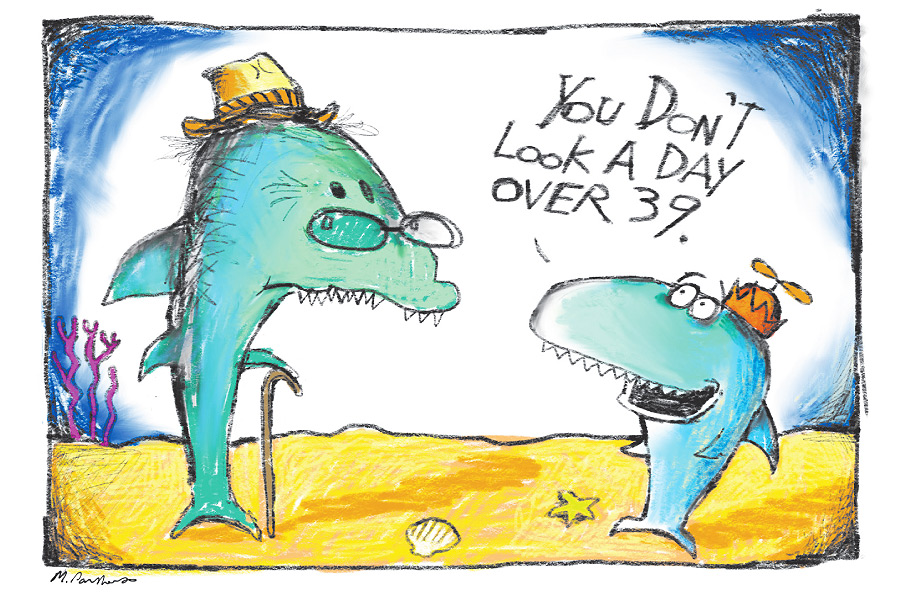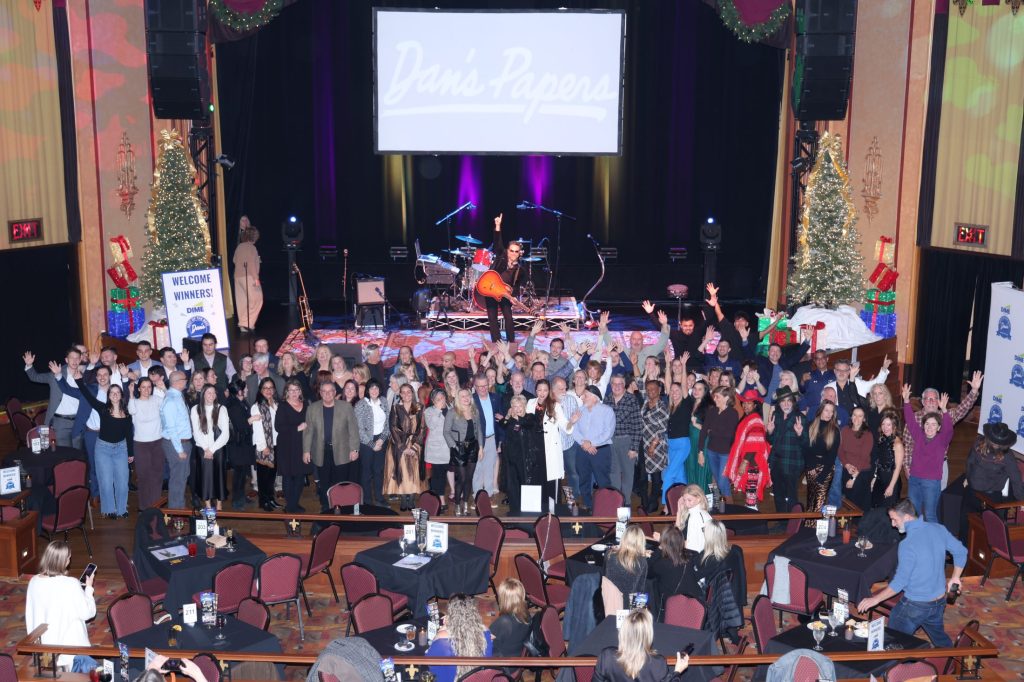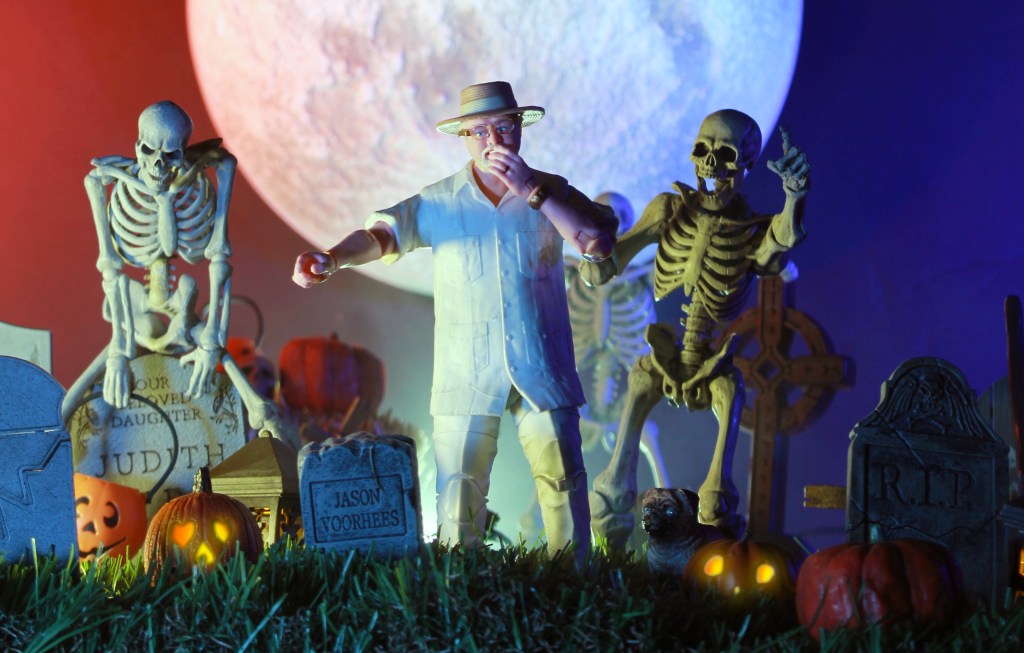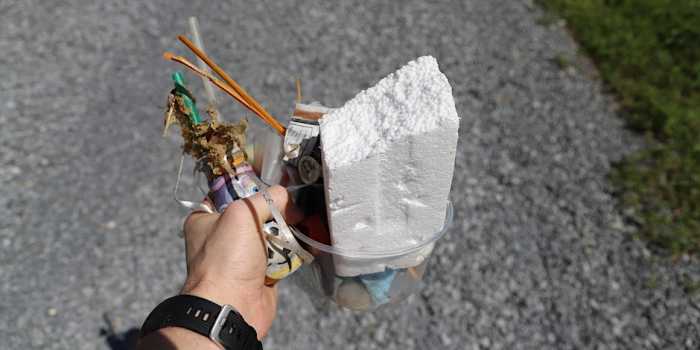The Failed Battle to Get Jaws Filmed in the Hamptons

This Sunday, June 21, the film Jaws will be shown at nearly 500 movie theaters around the country, including, here in the Hamptons, at the United Artists East Hampton Cinema and the Hampton Bays 5. It’s the 40th anniversary since it premiered in 1975 to become one of the 10 most successful films ever made (measured in dollars adjusted for inflation). And for a number of reasons, which I will get to shortly, its debut came not on Martha’s Vineyard, where it was filmed, but at the East Hampton theater.
It was the first red carpet, limousine and paparazzi event ever in the Hamptons. And for it, as editor of Dan’s Papers, I stood across Main Street in that town with my camera, in front of one of the mom-and-pop stores—Marley’s Stationery Store, as I recall—and thought as I watched the goings on at the theater, this is really so weird—this is like Hollywood—I hope we never come to this, with all these famous celebrities striding up the aisle and swooning fans here to watch them as the cameras flash.
The reasons the premiere took place in the Hamptons were many. For one, the movie was made from a #1 selling book (that stayed on The New York Times Bestseller list for 44 weeks) by Peter Benchley, who set the story in the Hamptons, mentioned towns in the Hamptons, and modeled the character of grizzled shark fisherman “Quint” on an actual local Montauk fisherman, Frank Mundus, who went out looking for sharks on his boat Cricket II every day. The configuration of the fishing boat Orca that the shark ultimately destroys and sinks in the movie was almost identical to Mundus’s boat.
Prior to the premiere of the movie, I got lots of press releases (in the mail, then) from a marketing official at Universal Studios urging Dan’s Papers to write about the event, and I certainly intended to do so. People would be terrified about going swimming when they saw Jaws, he told me. Having read the book, I thought I would be terrified about going swimming if I saw it, too. As a result, I stood that day across the street and took pictures and when the film ended asked people coming out of the theater, almost all stunned to silence, what they thought. Many confirmed they would never swim in the ocean again. Only some teenagers I spoke to said it was a funny movie, and no, it wouldn’t bother them at all about going in the water. They laughed and walked on.
During the prior week I had called the Universal official several times (on a landline then) and I wanted to know, almost angrily, why it hadn’t been filmed in the Hamptons. We had heard they were going to be making this movie of the famous book. We thought filming here would be a great economic shot in the arm. And then we heard it would be Martha’s Vineyard. So what happened?
The explanation I got was that they needed the resort to be one that appeared to be very, very isolated, so it could fill theatregoers with dread. Martha’s Vineyard filled the bill. The Hamptons were too “busy.”
Busy? We weren’t busy, I told him. We were a little summer resort of mom-and-pop businesses, motels and windmills and beaches with an influx of vacationgoers in the summertime. (We absolutely were that in 1975. And you could buy a three-bedroom house anywhere but along the beach for less than $40,000.) We were PERFECT as a place to make the movie and we needed the financial boost of the filmmaking in the offseason. How could you make a movie about the Hamptons and not film it in the Hamptons?
The official told me he hadn’t seen the movie but would find out about it. I also told him that if the movie mentioned the Hamptons, and it terrified people as he had told me it would, it would scare visitors away from ever coming to this resort. And we would sue them.
“How would you like it if we made a movie about the studio tour at Universal which featured a sniper in one of the sets?” I asked him. That is the way I thought back then.
He got back to me. They had thought of that. The movie would be set on a small resort island called Amity. You couldn’t sue us, he said.
And that left me speechless.
After the movie appeared, almost all the principals involved in it—and they’d all become stars—took up residence in the Hamptons. Steven Spielberg, the director, was the first of them, buying a compound in the Georgica section of East Hampton in 1983. Roy Scheider, who as Chief Brody was the star of the film, bought a house in Sagaponack in 1994. Richard Dreyfus, who played the marine biologist, came out here. Only Robert Shaw, who played Quint, the old fisherman, did not. Just three years after the film came out, he died unexpectedly in Ireland of a heart attack at the age of 51.
What was the attraction of the Hamptons that brought them here? It probably was the great beauty, history, privacy, culture and local residents, salt-of-the-earth fishermen and farmers, that did. Or perhaps just the proximity to New York City. At the time, there was no “Hollywood” in the Hamptons. In fact, you can make a case that Spielberg started it, inadvertently, by moving here, so others followed. So until that time it was a place of peace and quiet for the rich and famous. And then it wasn’t.
As it turned out, after that, I became good friends with Roy Scheider and his wife, Brenda. Roy and I learned on the day we met that we both grew up in New Jersey, about 5 miles from each other. I grew up and graduated from high school in Millburn. He grew up and graduated from Columbia High School in Maplewood. His father owned a gas station. I knew exactly where that was. There was also the fact that in college in upstate New York—I had moved to the Hamptons by then, or to be more precise, my dad moved our family here to be near the drugstore he’d bought here—I had been the president of the drama club and had appeared in numerous plays by Ionesco, Beckett and Laurents, and Scheider had done the same at Franklin & Marshall in Pennsylvania. After that, he became an actor. I became a newspaper publisher.
I recall a wonderful time in the living room of our home on Three Mile Harbor, where our guests for dinner were Brenda and Roy. One of my kids, David, who was 10 at that time, sidled up to Roy and looked him up and down. That shark wasn’t real, was it? He wanted to know. Roy assured him it was fake, with a motor inside. David wanted to know how they got it to move like that. And so it went.
A few years later, when the Jaws ride opened at Universal Studios in Florida, we’d go there with the kids and take the ride, and we’d think of Roy, whose voice was coming over the loudspeaker warning everybody to stay away from the water. I did ask Roy if he’d been to it and he told me no he hadn’t, but he hoped to get around to it.
Some years later, when Joyce Robinson founded the Hampton International Film Festival (HIFF), I decided that for the week of the festival I would put a poster of a famous film on the cover of Dan’s Papers. Of course, that first year what I wanted was the classic Jaws poster, with the monster under water coming up directly beneath a young woman in a bikini swimming happily along above, but it occurred to me that I needed permission from Universal to do this, and so I wanted to call them up. This was around 1992, long after the movie with its famous poster had come out. So I called Roy to ask him who to call.
“I’m giving you permission,” he said.
“But I need official permission from the holder of the copyright of that image,” I told him.
“I’m giving you permission. If you have any trouble, you have them call me.”
In the course of things, Roy also told me wonderful stories about the making of the movie. The shark kept breaking down and they’d have to get the mechanics flown in to the Vineyard to fix it. “I think it was the salt water getting in the gears,” he told me. He said sometimes they couldn’t film for weeks, and so they just sat there, bored. (His comment made me think of my talk with the Universal official about their need for isolation to create dread.)
One time, he told me, the whole crew went to this three-story, wooden, 100-year-old hotel and had dinner in the dining room. There was a ballroom adjacent to it and they could look into it and that night see all these girls in white crinoline dresses and flowers in their hair and young men in tuxedoes, and there was a band and champagne—it was a cotillion for the daughters of the wealthy New York and Boston high-society families who summered there.
“We sat there,” he told me. “We had spaghetti. And we had peas. Nobody was talking. We were so bored.” What came next just seemed to be the most natural thing to do, Roy told me.
He picked up a spoon, placed a single pea on it, lined it up carefully at Steven Spielberg’s nose across from him, pulled back the spoon and fired. Bingo. A minute later, Spielberg fired a pea back. Next it was a piece of meatball. And then a whole meatball. And then others were joining in around the table and then at all the tables in that dining room. “It was just a massive food fight and it went on and on,” he said. “And next door in the ballroom, the band played on and the girls and their boyfriends danced. It was an absolutely wonderful experience.”
Roy told me that as much as possible during these delays they filmed parts of the movie that did not involve the shark.
“And lots of it we just improvised,” he told me. One particular scene, one of the best scenes in the movie, was improvised. It’s the scene at night where Quint and the marine biologist are sitting in the galley of the boat, waiting for the shark to appear. The shark already has a harpoon in him. He’s trailing a rope attached to a buoy that constantly is pulling him up. He will show up. The men are drinking. They start singing sea shanties. Then Shaw rolls up his sleeve and shows Dreyfus a small scar. “Got this one fighting one of these sharks,” he says.
Dreyfus pulls up his shirt and shows a slightly larger scar on his chest. That’s from an encounter he’d had. And this goes on for a while with each one showing the other a progressively larger different scar that has become a badge on their bodies.
The cameras were rolling. Spielberg said, “We’re gonna keep it, do it again.” And so it was.
A 15-minute piece of fame actually came my way as a result of the Jaws movie.
As it must be clear to you by now, I had pretty mixed emotions about the premiere of the film on East Hampton’s Main Street. I’d been writing hoaxes in the newspaper before that from time to time. And so for the issue that came out just before the opening that Sunday, I had a front-page fake letter from the Chief of Police of the Hamptons, assuring visitors that it was safe to swim in our waters here, so long as you followed specific instructions.
“Yes, the killer shark is here,” I wrote. “But the butchers of the Hamptons provide this police department raw meat every single day, and offshore out in the ocean on Monday, Wednesday and Friday, we feed him by helicopter there. So it’s safe to swim in the bay. Then, on Tuesday, Thursday and Saturday, we feed the shark in the bay, so it’s safe to swim in the ocean. Just check on what day it is. Sunday, the shark sleeps.”
This hoax came to the attention of the editors of TIME magazine, which at the time was one of the three largest-circulating magazines in the country. They did a profile of me and Dan’s Papers. A week after that, I was in The New York Times and then interviewed on various TV news shows. It was a lot of fun. But the fame faded.
Jaws, the movie, however, has not. If you haven’t seen it yet, go. It’s scary, but not that scary. What was scary in 1975 is just amusing today. But you’ll love the film anyway.









